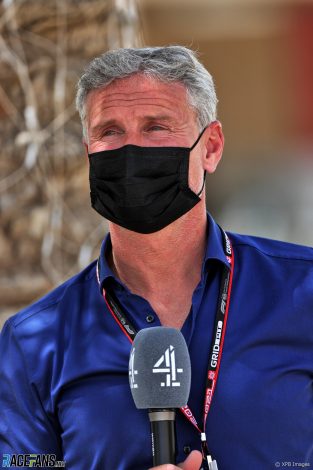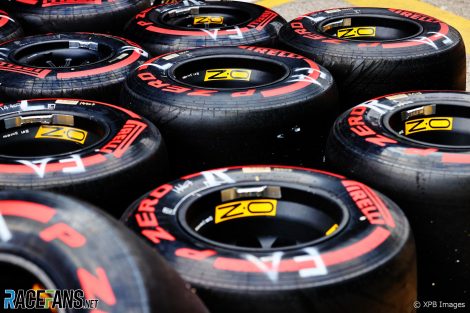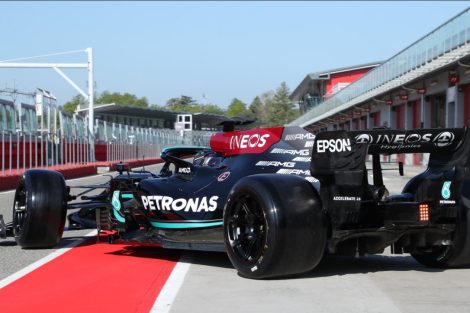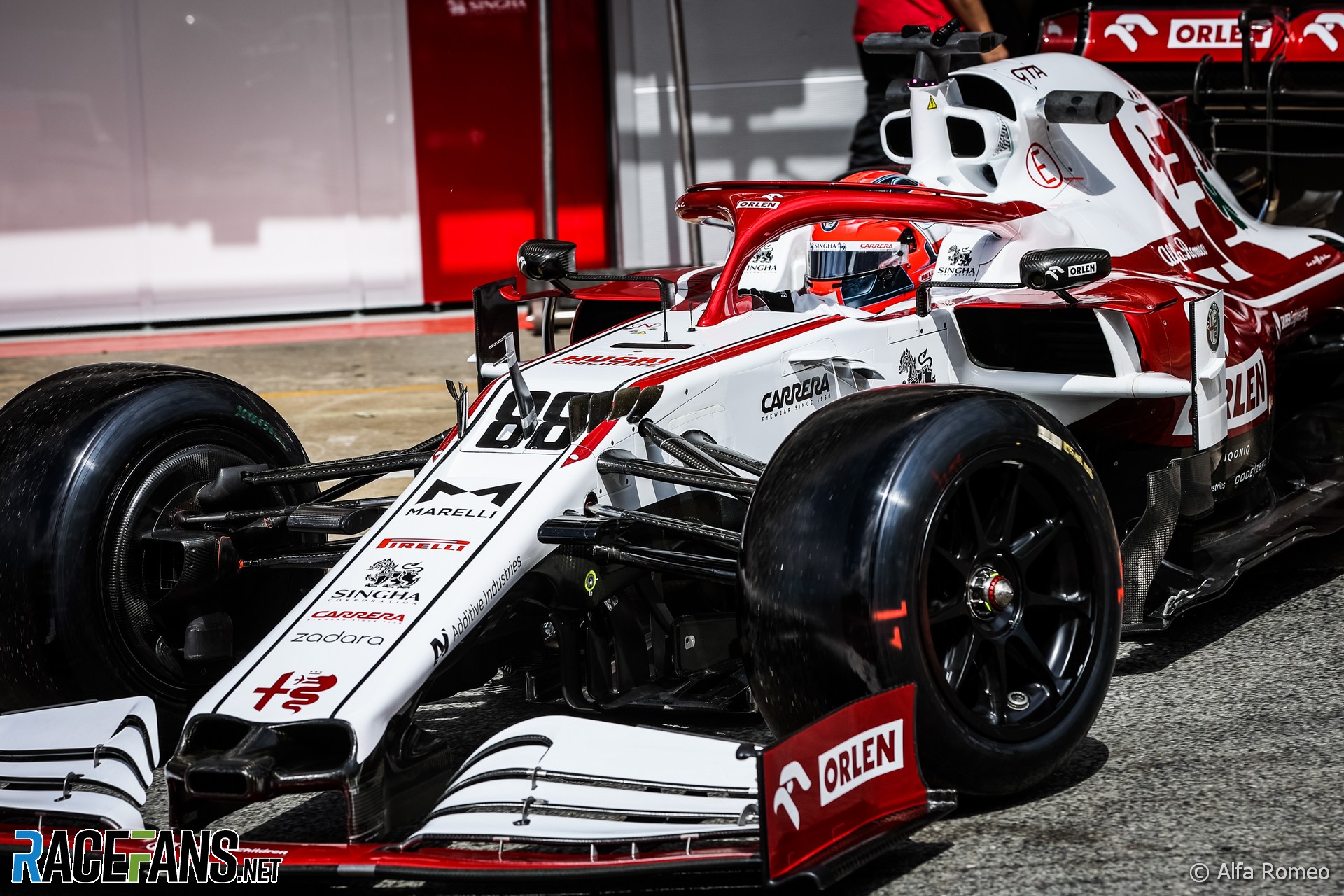Pirelli’s head of motorsport Mario Isola is confident the new tyres it is developing for the 2022 F1 season will reduce how much drivers have to manage their rubber during races.
Former Formula 1 driver David Coulthard this week complained Formula 1 has become dominated by tyre management.“This whole Pirelli era is just confusing to me and boring to me to have to talk about, and super-boring for me to have to listen to the drivers going ‘I was trying to avoid pushing too hard on the tyres’,” he told RaceFans.
Isola discussed Coulthard’s comments with him and said they were aimed more at Formula 1’s preference for high-degradation rubber than the job being done by its official tyre supplier.

Formula 1 ended competition between different tyre suppliers 15 years ago. When Pirelli arrived as F1’s sole tyre supplier in 2011, three years after Coulthard’s retirement, they were requested to produce high-degradation rubber.
“He doesn’t like the current system where we have tyres with some degradation that, as you know, they are designed to have this level of degradation,” Isola said.
Pirelli is developing a completely new range of tyres for next year, when F1 switches from 13-inch to 18-inch wheels. Isola said they have also been asked to reduce how quickly the tyres degrade.
“It will be a different story next year when we have been requested to design the new 18-inches tyres with different characteristics – less overheating, less degradation.
“He was just expressing his opinion about the current regulations and the current system. And I fully understand that because he is a driver that he used to drive more than 10 years ago when it was a completely different situation.
“We know that with the current cars that are very, very fast, even if much heavier compared to the past, you put a lot of stress on the tyres so this generates degradation. And also when you follow another car, you lose downforce and this is an additional element.
Advert | Become a RaceFans supporter and
“So we are working together with the FIA and FOM in order to have a different situation for next year. I’m sure that if you don’t lose downforce when you follow another car with tyres that are designed with different characteristics, we can achieve the target.”

This has added to the challenge of reducing tyre degradation, said Isola. Real-world tests of the 2022 rubber have already begun, using ‘mule’ cars adapted to approximate next year’s downforce levels and weight distribution.
“It’s not only the weight of the car that is stressing the tyre it’s the level of downforce, the speed, there are many parameters that we have to consider,” he explained.
“Obviously we are designing tyres for next year, keeping in mind all these numbers and also asking the teams that are providing new cars to give us cars that are representative of next year’s cars. Even if they are mule cars, the weight is the same that is in the regulations for 2022 – weight distribution, level of downforce – and so we are designing tyres with these characteristics in mind. Obviously they are different compared to the past, but that’s our job.”
Formula 1’s tyre requirements are communicated to Pirelli in a ‘target letter’. Isola said he is encouraged by the progress they have made towards meeting the specifications for 2022.
“The new target letter is just stating that we have to design a tyre with less degradation,” he said. “The number for degradation are in the target letter.
Advert | Become a RaceFans supporter and
“The delta lap time [between different compounds] is defined in the target letter. We have to focus on compounds with a wider working arrangement and to reduce the overheating. These are the main parameters that are interesting to know – there are some other technical characteristics – but mainly this is a summary of what we agreed.

“What I can tell you is that during our tyre development test, we obviously measure the degradation and we asked the driver to push each other to simulate what happens next year. And the results are very promising. Then next year, we will have different cars and we have to validate the results of the new cars. But the results so far are promising.”
Lewis Hamilton, who has voiced concerns about Formula 1’s tyres on several occasions in recent years, was encouraged by his first test on 18-inch rubber in April. “It was a good test and obviously it was the first step with the tyres,” he said. “But it definitely wasn’t a bad place to start.”
2021 Azerbaijan Grand Prix
- Aston Martin also confirms it followed Pirelli’s tyre restrictions before crash
- Pirelli confirm teams not to blame for Baku tyre failures following investigation
- “Tyres should not explode like that” says Villeneuve as Pirelli prepares to reveal findings
- Why Alonso is able to enjoy F1 more now than when he left
- Penalty for Safety Car error was just one of Latifi’s frustrations in Baku





Sacha Gortchakoff (@gosac)
4th June 2021, 13:11
OH ?!
So COU is the ringmaster, tyre-wise — noted.
Robbie (@robbie)
4th June 2021, 13:32
Lol the headline makes it sound like that doesn’t?
Euro Brun (@eurobrun)
4th June 2021, 13:25
I’ll believe it when I see it…
Robbie (@robbie)
4th June 2021, 13:30
Yeah me too. It does sound promising and I think not just LH but other drivers have said positive things too, albeit very little verbiage that I’m aware of, but I still worry that the operating window will be wider but not much and that they will still be too thermally finicky. However, it is a fact that the cars will be very very different, so we’re just going to have to see. There will always be tweaks and in fairness Pirelli does not have actual 2022 cars with which to work.
StefMeister (@stefmeister)
4th June 2021, 14:26
I don’t think there should be a target letter at all because I don’t think any of those at the FIA/F1/Liberty have any understanding of how to make a tyre or what the consequences of those targets actually are. That for me has been by far the biggest problem with the tyres of the past 10 years.
I go back to the concern I raised back when they were first discussing introducing high degredation tyres for 2011, A concern I feel has proven to be correct. The whole high degredation concept was born out the desire to replicate what was seen at Montreal 2010, Yet it totally ignores that the high degredation seen in Montreal that year wasn’t necessarily the thing that made that such a good race.
The reason that race played out the way it did was because it was high degredation which nobody anticipated & so nobody knew how to deal with it & both drivers & engineer’s were having to figure out how to manage it on the fly.
It was the unexpected element of that weekend which created the unpredictability & as soon as you lose that unexpected element by having high degredation tyres become a feature of the tyres everywhere you begin to lose that unpredictability because everyone figures out how to deal with it. And as Pirelli have had to continually change there concept to try & keep hitting the targets given to them to constantly try to keep catching teams/drivers out you end up with tyres that have to be more & more extreme which creates more & more potential negatives.
Jay
4th June 2021, 16:23
Cue the drivers complaining tyres are too hard to warm up instantly. More tyre talk.